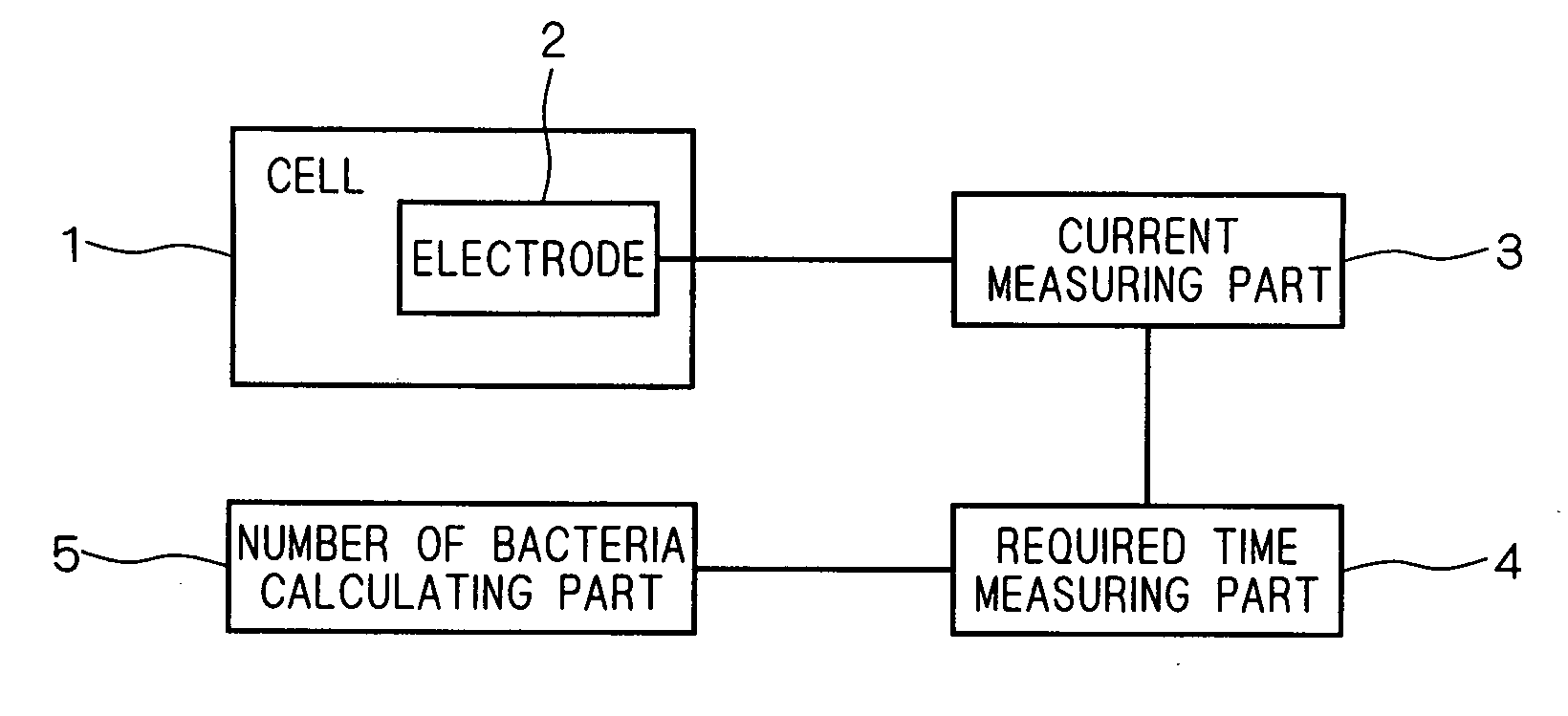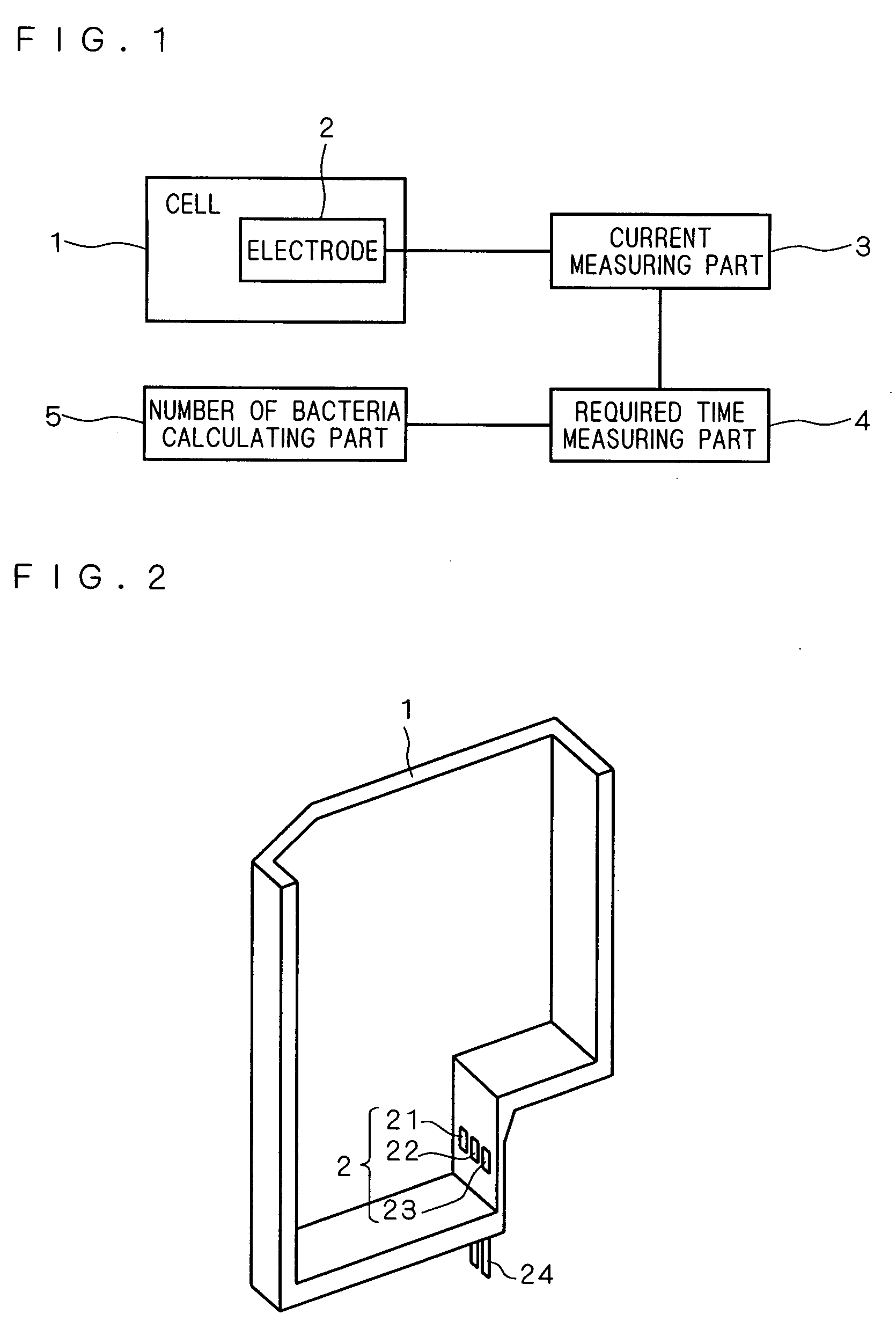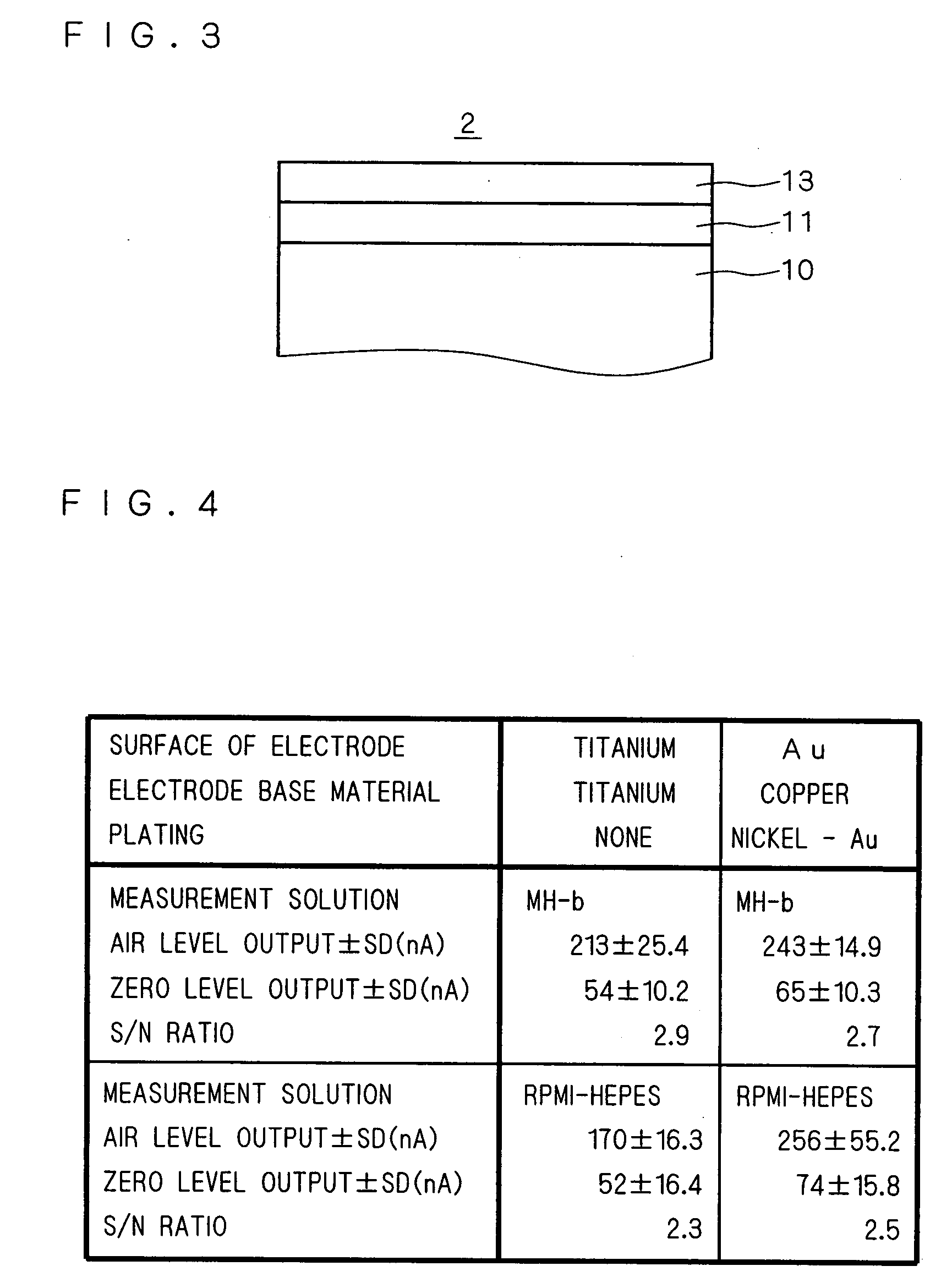Oxygen Electrode
- Summary
- Abstract
- Description
- Claims
- Application Information
AI Technical Summary
Benefits of technology
Problems solved by technology
Method used
Image
Examples
embodiment 1
[0039]A block diagram of an apparatus for measuring the number of bacteria using an oxygen electrode in the present embodiment is shown in FIG. 1. This apparatus for measuring the number of bacteria is provided with a cell 1, and a culture medium to which a specimen is added is stored in this cell 1. Inside of the cell 1, there is provided an oxygen electrode 2 to be used in the oxygen electrode method. A sectional perspective view of the cell 1 is shown in FIG. 2. The side wall close to the base of the cell 1 is provided with the three electrodes of a counter electrode 21, a working electrode 22, and a reference electrode 23 including the oxygen electrode 2. Moreover, the cell 1 is provided with an output terminal 24 connected electrically to the counter electrode 21, the working electrode 22, and the reference electrode 23, and the oxygen electrode 2 is connected to a current measuring part 3 through the output terminal 24.
[0040]In the current measuring part 3 in FIG. 1, the curre...
embodiment 2
[0054]The inexpensive formation of the oxygen electrode 2 in the present embodiment is made possible by making the oxygen electrode having a configuration of the electrode base material 10 of copper-the nickel layer 11-the Au layer 13. However, in a case where the nickel layer 11 is layered on the surface of the electrode base material 10 with a general plating condition, there is a problem that pinholes are easily generated in the nickel layer 11. When pinholes are generated in the nickel layer 11, the pinholes could be generated also on the Au layer 13 layered on the top influenced by the nickel layer 11. When a large number of pinholes are generated in the Au layer 13, the surface of the electrode base material 10 becomes exposed, and in a case of measuring the amount of dissolved oxygen in the liquid culture medium, there is a problem that the difference between the initial current value of the measurement and the fixed threshold value becomes small.
[0055]There is a case where t...
embodiment 3
[0066]In Embodiment 2, copper was used in the electrode base material 10. However, the present invention is not limited to this and it may be other materials as long as it is an electrode base material 10 which is suitable for the measurement of the amount of dissolved oxygen. For example, in the present embodiment, stainless steel is used in the electrode base material 10. Furthermore, the apparatus for measuring the number of bacteria in which the oxygen electrode 2 in the present embodiment is used is the same as the block diagram of the apparatus for measuring the number of bacteria shown in FIG. 1. Further, the cell 1 to be used in the present embodiment is also the same as the sectional perspective view of the cell 1 shown in FIG. 2. Consequently, a detailed explanation about the apparatus for measuring the number of bacteria and the cell 1 is omitted.
[0067]Next, a sectional view of the oxygen electrode 2 in the present embodiment is basically the same as the sectional view sh...
PUM
 Login to View More
Login to View More Abstract
Description
Claims
Application Information
 Login to View More
Login to View More - R&D
- Intellectual Property
- Life Sciences
- Materials
- Tech Scout
- Unparalleled Data Quality
- Higher Quality Content
- 60% Fewer Hallucinations
Browse by: Latest US Patents, China's latest patents, Technical Efficacy Thesaurus, Application Domain, Technology Topic, Popular Technical Reports.
© 2025 PatSnap. All rights reserved.Legal|Privacy policy|Modern Slavery Act Transparency Statement|Sitemap|About US| Contact US: help@patsnap.com



